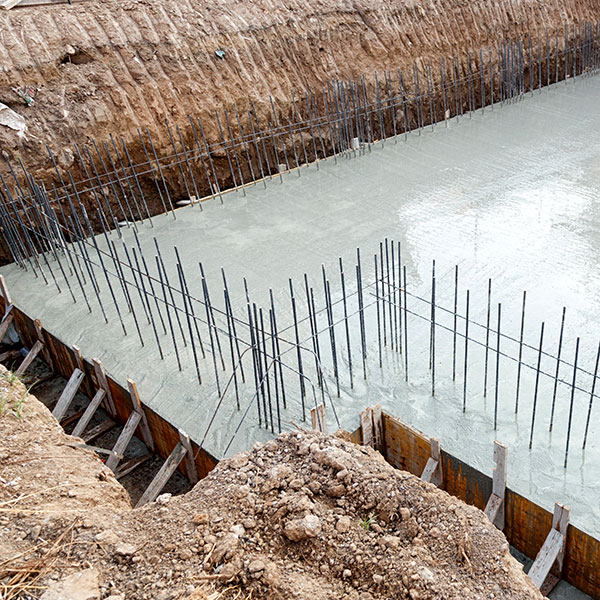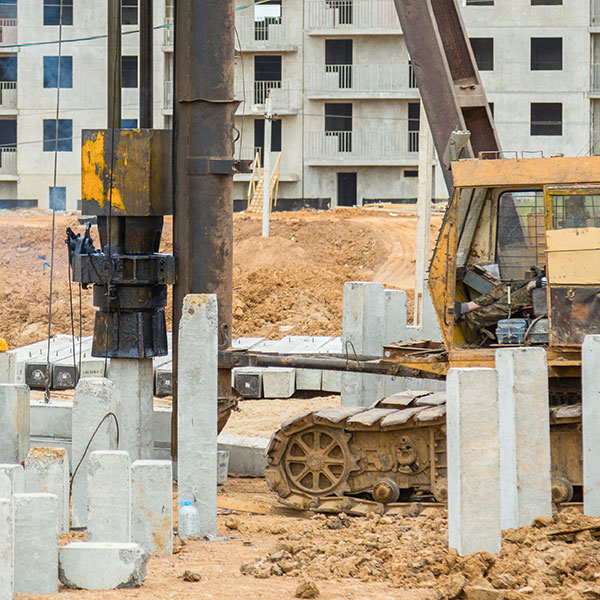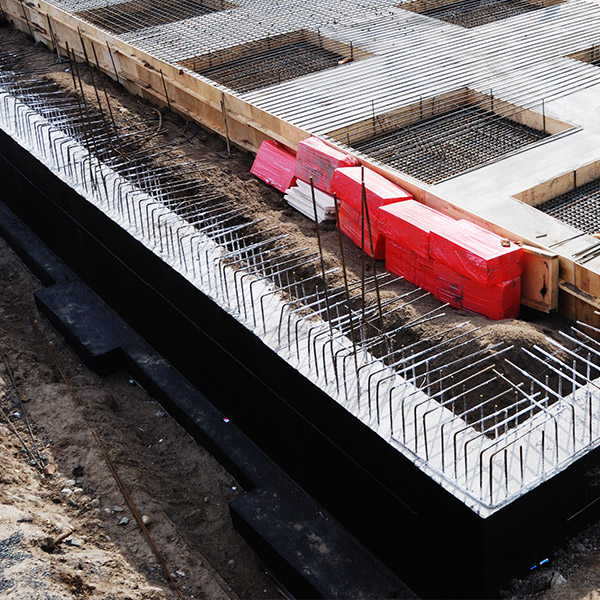Find foundation, underpinning and piling experts
Foundations, underpinning and piling are complex, technical services that require the know-how of specialist groundworkers and engineers. More than any other part of your home, it pays to invest in solid foundations, so find a professional you can trust today.
Post your job for free. Read reviews, get quotes, and see tips on hiring the right person.
Browse Underpinning / Piling / Foundations specialists
Take a look at our Underpinning / Piling / Foundations specialists profiles, read reviews and request quotes directly.
Underpinning, piling and foundation construction – Rated People
When it comes to foundations and underpinning, the name tells you everything you need to know about their importance to your home. This specialist groundwork quite literally provides the base your home is built on. And that’s why it’s absolutely vital the professionals you use are experienced experts who know what they’re doing.

The complexity of foundations (and underpinning or piling, if required) depends on the structure you’re building, and the state of the ground your home or plot sits on. Basic foundations involve filling trenches (dug precisely according to plans) with a layer of solid concrete and then building blockwork up to ground level. Alternatively, an entire trench can be filled with concrete to just below ground level before adding damp proof coursing.
Piling is becoming an increasing popular alternative to standard footings or foundations. It involves driving piles into the ground, which are made from steel, concrete or even wood. A ground beam then sits atop the foundation, which your structure can be built on.
Underpinning is required when existing foundations have become defective, and to counter issues like subsidence. The appropriate method will be recommended by an experienced groundwork specialist and potentially a structural engineer too. The standard approach to underpinning involves excavating specific sections below the footing and reinforcing them with concrete. Piling techniques provide an alternative to traditional underpinning and can be used in situations where there’s restricted access. Not only is piling faster than standard underpinning, but it has a higher load capability and less disruption. Those benefits come at a cost though, and you’ll find piling is significantly pricier than standard concrete underpinning.
Cost of foundations, underpinning and piling
It pays to invest in foundations, but quite how much you’ll need to invest depends on the type of foundations you require. Basic foundation laying involves the following steps (excluding site clearance and the setting out of footings):
- Excavation: £7-£10 per sqm
- Laying foundations (concrete and blockwork): £40-£60 per sqm

Piling costs are typically significantly higher than standard foundations – anywhere from 2-3 times more expensive than the concrete and blockwork method.
Similarly, underpinning costs vary according to the issue that needs to be resolved, and the method selected. For mass concrete underpinning you can expect to pay between £1,000-£2,000 per linear metre.
How to build a foundation
Basic foundations follow a fairly simple process. After you’ve consulted a structural engineer and have all the necessary plans approved, the first step is to dig out trenches. Your groundwork professional may recommend a ground survey before any digging begins. This process involves creating trial holes to ensure the foundation method you plan to use is appropriate. With (or without) that survey complete, footings can then be dug to the agreed level.
The next phase involves laying concrete into the base of the trench to at least 250mm in depth. Blockwork is then built up to floor level. This method is called a strip foundation. Alternatively, a technique known as “trenchfill” involves (unsurprisingly) filling the trench with concrete to just below ground level. Both methods are completed with the application of a damp-proof course onto which the ground floor can be installed.
How does piling work
There are three main piling techniques: screw piling, pile and beam, and piled raft.
Screw piling is the simplest piling technique to execute. A small crew of ground-workers can install screw piles and brackets by hand or with the assistance of a small excavator. This method is well-suited to walls and larger structures, when used with supporting brackets. Screw piling offers a number of benefits, including ease of installation, lower costs and reduced environmental impact.
The pile and beam method involves installing mini-piles either side of a wall. Brickwork can then be removed below the affected wall, and a reinforced concrete needle beam inserted to connect the piles. The pile and beam technique is well-suited to homes on smaller plots, or with restricted access. It’s also faster and less messy than traditional mass concrete underpinning and is capable of bearing high loads.

Finally, there’s the piled raft approach. Piled raft foundations are required when an entire building needs to be underpinned, when foundations can’t be accessed or where soil conditions aren’t suitable for any other method. Piles are placed into the ground and needle beams are installed to help bear the load. A ring beam links the needles together and the structure is then filled with concrete.
When does a house need underpinning?
Cracked walls, ceilings or flooring are the tell-tale signs that you may need to have all or part of your home underpinned. Diagonal cracks, or those that reach a quarter of an inch or larger, are classic symptoms of faulty foundations, or problematic ground conditions. More severe warning signs are walls beginning to buckle. Underpinning, either using the mass concrete method or any of the piling techniques outlined above, can help to remedy these problems.
While underpinning is usually associated with foundation problems, it can also be required if you’re planning to add another floor to a building, or if it needs to stand up to increased load-bearing requirements.
The qualifications your foundation, piling or underpinning professional needs
Foundations and piling or underpinning will almost always require the expertise of a structural engineer. They will be able to advise on load bearing considerations, as well as the most appropriate technique to use (taking ground and soil conditions into account). Choose an experienced professional who holds chartered status from the Institution of Structural Engineers.
The groundworkers carrying out your excavation work should also be experienced, though they won’t need formal accreditation. A diploma, City and Guilds qualification or evidence of completing an apprenticeship is always helpful, but ultimately you should look for a proven track record of delivering groundwork services to a high standard and complete customer satisfaction.
Planning permission for foundation, piling or underpinning work
How and where you lay foundations will be determined by the planning permission you’ve been granted. This will be decided by your local planning authority, and unless an unforeseen issue crops up you’ll need to stick closely to what you’ve been given permission for.
When it comes to underpinning, you won’t require planning permission to remedy a fault with your foundations. The only exception here is a listed building, which may have certain limitations.
Insurance for foundation, piling or underpinning work
It’s crucial that your professional holds public liability insurance, to cover your property against damage. Such is the importance of this work, most structural engineers will also hold professional indemnity insurance, protecting them in case anything goes wrong with the services they’ve provided.
Questions you should ask your foundation, piling or underpinning professional
- For standard foundations, which method would they use (and why)?
- Will they be using a strip or trenchfill foundation?
- For underpinning, which technique would they advise on (and why)?
- For piling, what is the most cost-effective option available?
- Can they provide a warranty (or do they have professional indemnity insurance) to cover their work?
Get our app for homeowners
- Send messages and get notifications from tradespeople
- Add photos to get more accurate quotes
- View tradespeople's profiles
